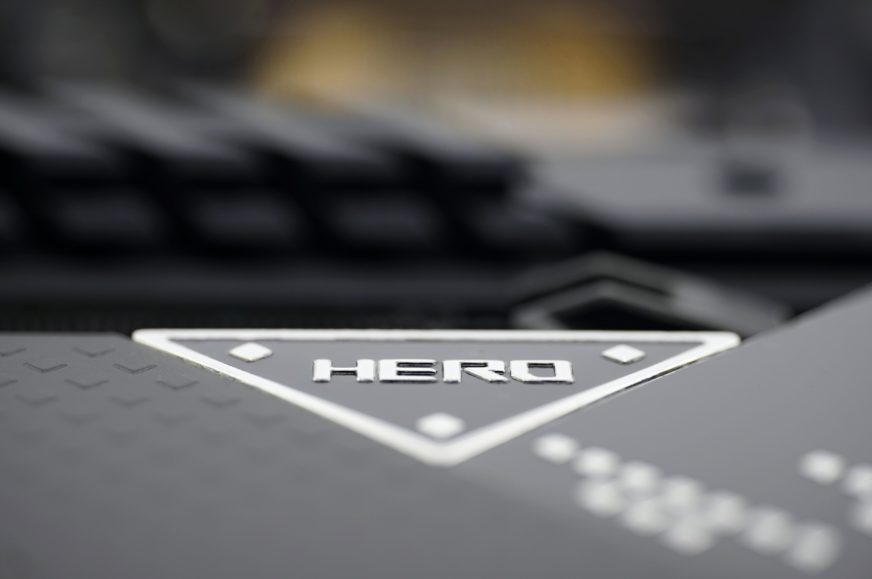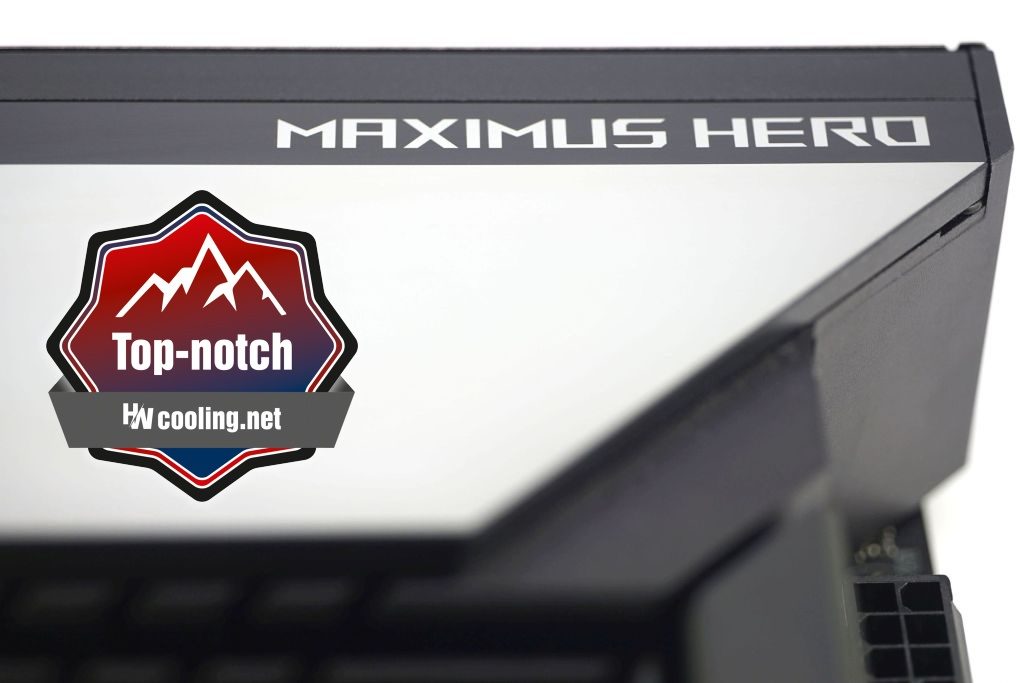Conclusion
An expensive but a very effective motherboard. Thus, the high purchase price of the Maximus Z690 Hero can be gradually returned in lower operating costs after fine-tuning. First and foremost, however, it is a proper support for the most powerful processors, which can be safely overclocked well beyond the capabilities of the most powerful coolers. The board also comes with an SSD expansion card, unusually.
Conclusion
In rendering a verdict over the Maximus Z690 Hero board, we’ll start with a question that will probably be quite common among users. That is, why pay double the price compared to what, for example, the MSI MAG Z690 Tomahawk WiFi costs. It can also handle the most powerful Core i9 with confidence. Aside from the fact that it has (compared to the aforementioned MSI board) an extra graphics display, that you also have to pay for, there are also some functional reasons why the Maximus Z690 Hero might be a more attractive choice.
The main reason lies in better preparedness for higher performance. This means that even in worse conditions (say, with higher ambient temperature), it can handle a more powerful processor. Typically after above-standard overclocking (e.g. via MCE). In other words, where a board with a weaker VRM will struggle, the Maximus Z690 Hero still has room to spare. With the Z690 Tomahawk with Core i9-12900K, MSI preemptively sets the load offset multiplier for AVX to -2, and in these situations the doesn’t look like it at first glance from power draw measurements – the B660 Aorus Master DDR4 temps of voltage regulators.
Despite the higher power draw on the Z690 Hero, which has already been discussed, the efficiency is very high, the highest, even from the point of view of the whole system, that is, even including the power draw of devices powered via the ATX connector.
The huge price increase over the MSI MAG Z690 Tomahawk WiFi due to the difference in features is really high. When comparing prices, however, you also need to look at the other features led by the ROG Hyper expansion card for additional M.2 SSDs or the wider selection of external connectors, among which shines Thunderbolt 4 in particular. And then there’s the slightly better memory support, overall wider tuning options, physical buttons directly on the board, and a bunch of miscellaneous details that we won’t overwhelm you with in the final review (some of which have already been covered in the first two chapters of this article). However, we have to admonish Asus for the inability to assign different temperature sources to the PWM fan curves – this is a basic feature of even cheap boards, and it can’t be missing on the Z690 Hero. But it is.
Performance tests did not deviate from other boards. There are tests where the Z690 Hero scores the highest (from games such as in Metro Exodus), but the lead over the second “fastest” board is usually less than 1 %. We make these measurements practically only to detect possible anomalies with significant drops in performance, which are very rare. In the case of the Z690 Hero, we haven’t come across anything at all, and when you do observe higher performance somewhere than other boards, it’s usually due to the higher bandwidth of DDR5 memory (many boards are tested with DDR4 memory) or because of the case with video encoding (x265) in HandBrake, for example. But even so, the benefit is completely negligible (+1 %). Interestingly though, there are a few scenarios where the configuration with the cheaper processor doesn’t fare too well compared to the cheaper boards. The Core i5-12400 in the Z690 Hero does sometimes lag up to 5 % behind the results when it’s in the Biostar B660GTA (or other top-scoring board in that test). We’ll discuss why this happens later in a separate article.
For the most powerful processors that this class of motherboards is for, the Maximus Z690 Hero is one of the technically best options. Sure, the price could have been lower, and compared to significantly cheaper (and not that much “worse”) boards, it’s hard to justify. But if there’s one thing we don’t take into account when giving something the Top-notch award, it’s price.
English translation and edit by Jozef Dudáš
| Asus ROG Z690 Maximus Hero |
| + Very powerful 21-phase power delivery (VRM)... |
| + ... handles even Core i9-12900K efficiently after manual overclocking |
| + Option to manually overclock the CPU by changing the multiplier |
| + Efficient power management |
| + Particularly high efficiency at lower CPU power power draw (below 125 W) |
| + Three fast (four-lane) M.2 slots for SSD... |
| ... up to five after counting the additional two on the included expansion card |
| + Seven fast USB 3.2 gen. 2 connectors on the rear I/O panel |
| + Thunderbolt 4 included (via two USB-C connectors) |
| + Detailed fan management options |
| - Very high price point |
| - For PWM curves, you can't adjust the temperature source (everything is tied to the CPU sensor) |
| Orientačná koncová cena: 685 EUR |
Test games are from Jama levova
Special thanks to Blackmagic Design (for licenses for DeNoise AI, Gigapixel AI and Sharpen AI) and Topaz Labs (for licenses for DeNoise AI, Gigapixel AI and Sharpen AI)
- Contents
- Asus ROG Maximus Z690 Hero in detail
- What it looks like in BIOS
- Methodology: Performance tests
- Methodology: How we measure power draw
- Methodology: Temperature and frequency measurements
- Test setup
- 3DMark
- Borderlands 3
- F1 2020
- Metro Exodus
- Shadow of the Tomb Raider
- Total War Saga: Troy
- PCMark and Geekbench
- Web performance
- 3D rendering: Cinebench, Blender, ...
- Video 1/2: Adobe Premiere Pro
- Video 2/2: DaVinci Resolve Studio
- Graphics effects: Adobe After Effects
- Video encoding
- Audio encoding
- Photos: Adobe Photoshop, Affinity Photo, ...
- (De)compression
- (De)cryption
- Numerical computing
- Simulations
- Memory and cache tests
- M.2 (SSD) slots speed
- USB ports speed
- Ethernet speed
- Power draw curve (EPS + ATX connector) w/o power limits
- Vývoj spotreby (EPS + ATX konektor) s limitmi napájania podľa Intelu
- Total power draw (EPS + ATX connector)
- Achieved CPU clock speed
- CPU temperatures
- VRM temperatures – thermovision of Vcore and SOC
- SSD temperatures
- Chipset temperatures (south bridge)
- Conclusion













